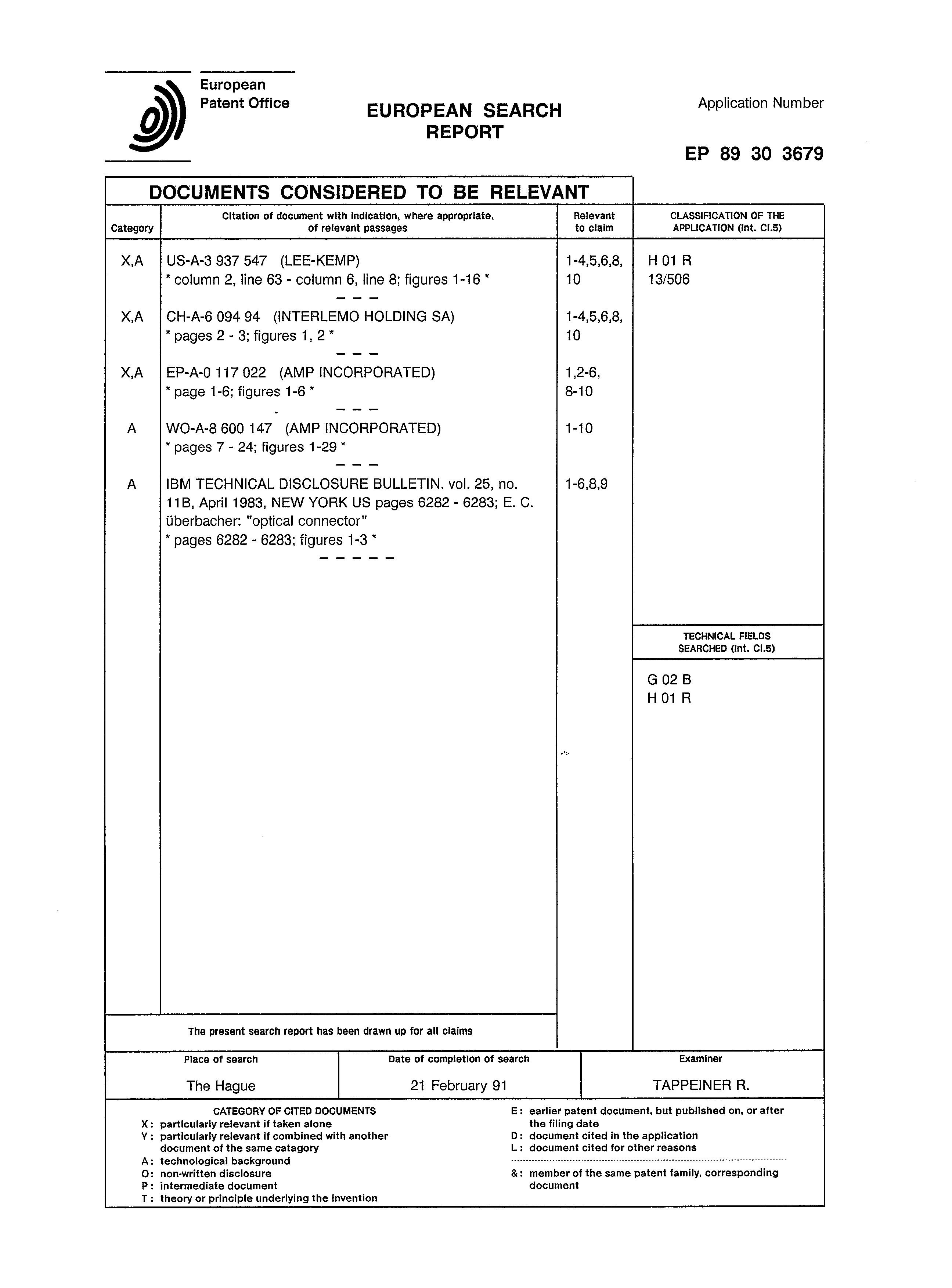| (19) |
 |
|
(11) |
EP 0 338 727 A3 |
| (12) |
EUROPEAN PATENT APPLICATION |
| (88) |
Date of publication A3: |
|
17.04.1991 Bulletin 1991/16 |
| (43) |
Date of publication A2: |
|
25.10.1989 Bulletin 1989/43 |
| (22) |
Date of filing: 13.04.1989 |
|
| (51) |
International Patent Classification (IPC)4: H01R 13/506 |
|
| (84) |
Designated Contracting States: |
|
DE ES FR GB IT NL SE |
| (30) |
Priority: |
19.04.1988 US 183194
|
| (71) |
Applicant: AT&T Corp. |
|
New York, NY 10013-2412 (US) |
|
| (72) |
Inventors: |
|
- Myers, Clyde Jackson
Stone Mountain
Georgia 30087 (US)
- Stephenson, Daniel Lee
Norcross
Georgia 30093 (US)
- Travieso, Ruben
Duluth
Georgia 30136 (US)
|
| (74) |
Representative: Johnston, Kenneth Graham et al |
|
AT&T (UK) LTD.
AT&T Intellectual Property Division
5 Mornington Road
Woodford Green
Essex, IG8 OTU
Woodford Green
Essex, IG8 OTU (GB) |
|
| |
|
| (54) |
Connector assembly having a latching mechanism |
(57) A connector body (26) which terminates at least one transmission medium includes
on each side thereof a cantilevered arm (66) having a latching nub (70) projecting
from a free end of the arm. A release cover (80) having a gripping portion (88) oriented
toward a cable input end (32) of the connector body is mounted slidably on the connector
body with the latching nubs of the arms each projecting through a window (90) in the
cover. Conductors in the connector body are connected to conductors of another connector
or of a device by inserting the connector body and release cover into a coupling (100)
or into a receptacle. The latching nubs of the arms protrude into openings (106-106)
provided in a housing (102) of the coupling to secure the connector body thereto.
In order to withdraw the connector body from the coupling, a user moves the cover
slidably along the connector body toward the cable input end. Walls which define the
windows of the cover cam against the latching nubs causing them to be depressed as
the free ends of the arms are moved inwardly. Once the nubs have cleared the openings
in the coupling or in the receptacle, the connector body and release cover may be
withdrawn from the housing. The release cover also is effective when forces of a predetermined
magnitude are applied to the connector body to cause the latching nubs to become disengaged
from the coupling and allow withdrawal of the connector body therefrom.

